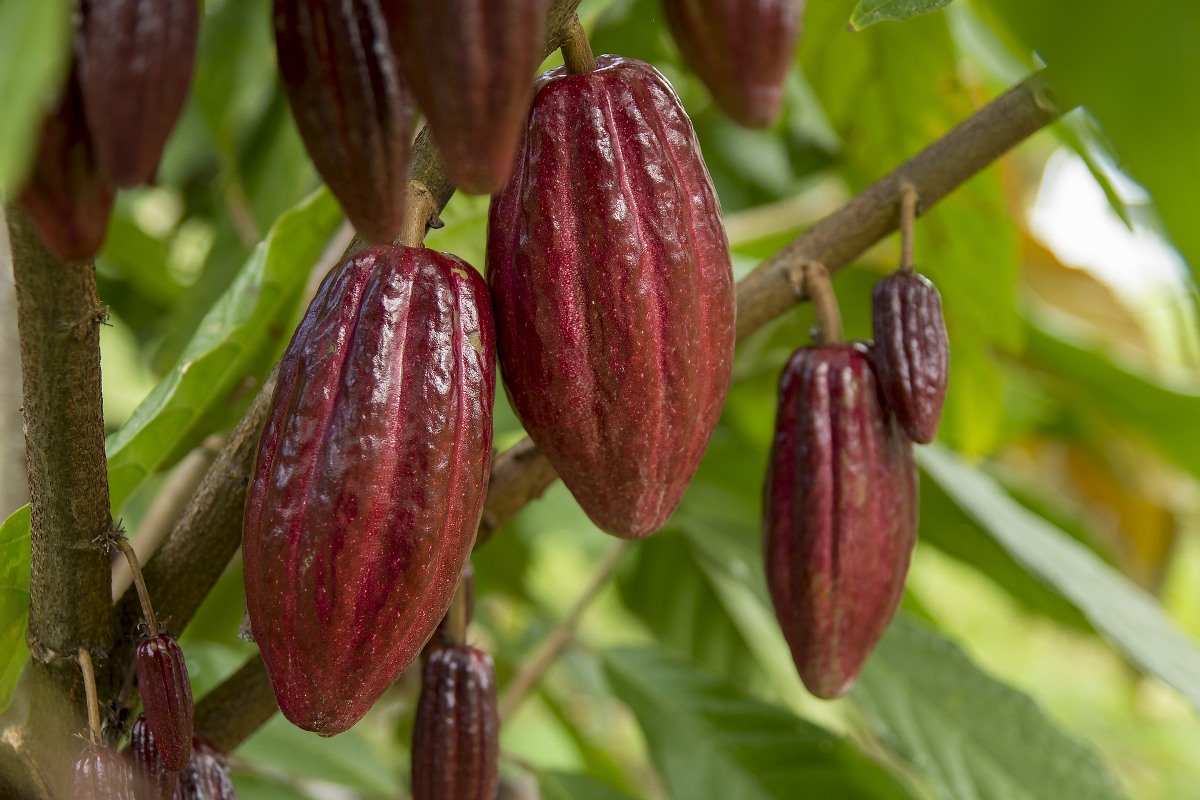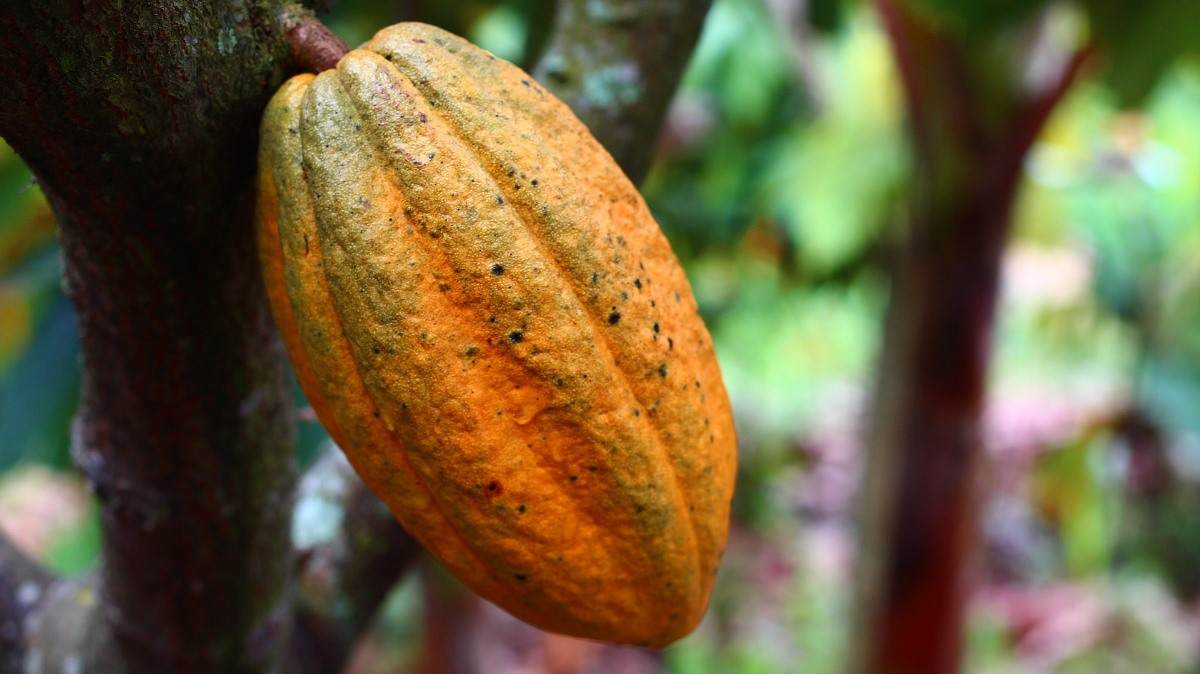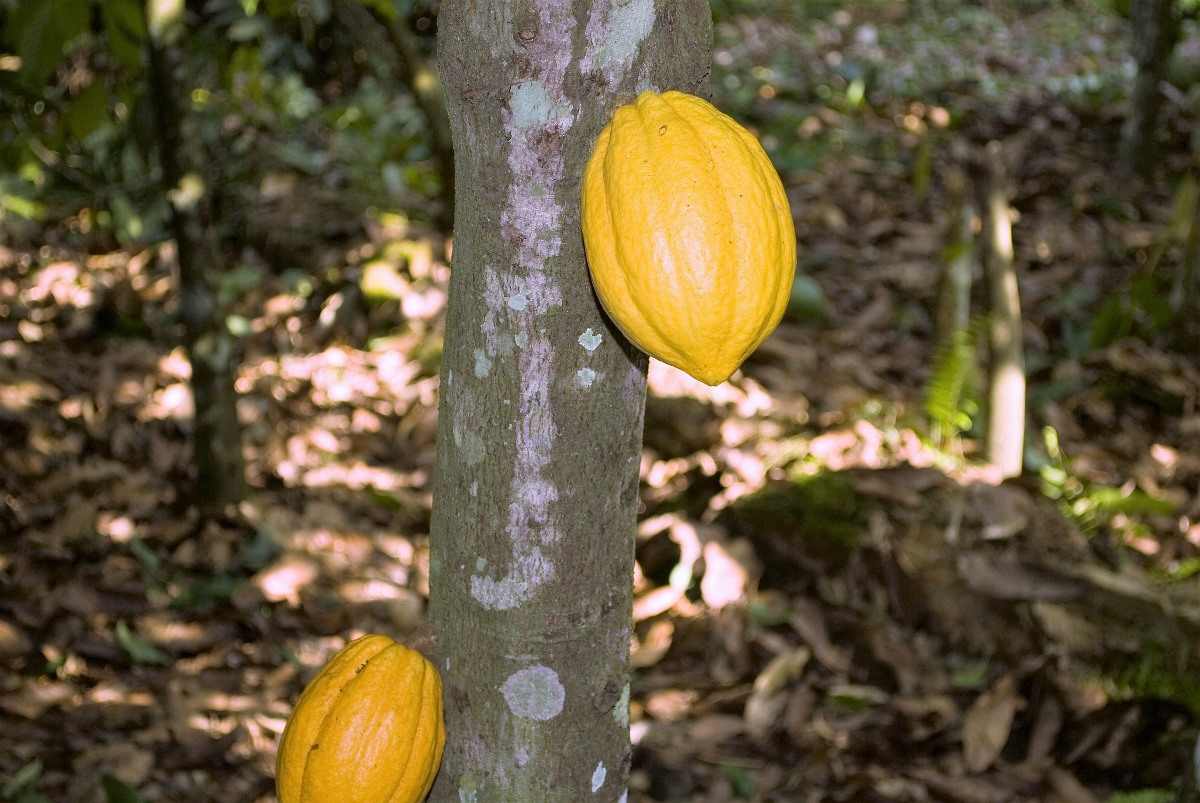Introduction to Organic Cocoa Production
Cocoa is a small tree from the Malvaceae family. The Cocoa tree is also called Theobroma cacao, and Cacao tree. The Cocoa fruit has a similar shape to stunted cucumber, and is 8 to 10 cm thick, around 25 cm long, and weighs 300 to 400 g, even though they vary substantially between varieties. In Cocoa farming, it is critical to have robust, healthy trees by maintaining the best balance of sunlight, air, water, shade, and nutrients. This will help prevent diseases, particularly in the absence of pesticides and chemical fertilizers, which are not part of organic farming systems. In this article we also discuss the below topics;
- How do you dry and ferment Cocoa beans
- What is the ideal Cocoa growing temperature
- Importance of Cocoa fermentation
- How long does it take for Cocoa to grow
- How Cocoa is cultivated
- What type of soil does Cocoa grow
A Step By Step Guide to Organic Cocoa Production
Cocoa grows well on a wide range of soils but loses soils that allow movement of air and moisture, and root penetration is ideal. It must hold moisture in the soil during the dry season, as Cocoa needs a regular supply of moisture for good growth. Cocoa can be grown in soils having a pH value range from 4.0 and 7.5; it succeeds better in neutral soil.

Certified organic agriculture is the production by agreed-upon standards for organic agricultural practices. These standards include an annual inspection process, and those certify that the organic crop has been produced and handled with no prohibited substances (synthetic paraquat and pyrethroids) or synthetic chemicals. The organic crop must also have been grown on land to avoid the application of these substances for a minimum of 3 years. Each organic agricultural operation must use an “organic plan” agreed upon by both the certifier and the grower. It must detail all parts of the agricultural production of the certified crop. This mainly includes soil management, pest controls, post-harvest techniques, crop rotation, biological inputs, storage, handling, and document tracking.
Advantages of Organic Cocoa Production
- Fewer inputs – reduced costs – Organic production practically eliminates the use of costly external inputs such as plant protection substances and fertilizers. By not using these, farmers can significantly decrease their operating costs. External inputs (that are generally bought from big agrochemical companies that pay little to the local economy) are substituted with local inputs. For example, expensive hybrid seeds are replaced with locally kept seeds (for example when intercropping Cocoa with papaya trees) and chemical fertilizers are replaced with compost. This decreases costs and increases farmers’ sovereignty by making them less dependent on big companies and money.
- Higher prices for organic Cocoa – Those Cocoa beans are produced organically also command a higher price in the international marketplace compared to conventional ones. So, the reduced input costs and the improved prize per ton of organic beans leads to a higher farm income, overall.
- Environmental and health benefits – Organic Cocoa production is more naturally sustainable than conventional production. This is attained through avoidance of pollution and healthier production methods such as agroforestry. Also, by avoiding hazardous chemicals such as insecticides and pesticides, the health of Cocoa farmers is protected.
- Increasing the sovereignty of farmers and their income. And organic production encourages intercropping of the Cocoa plantation with numerous other useful crops such as shade trees, bananas, pineapples, oil palms, and jackfruit. Each of these provides the farmers with additional income and food sources, further helping farmers to become independent of having to buy food and improving their farm income.
- Environmental advantages would include increased diversity of animals and plants, soil conservation, utilization of local and renewable resources, decreased soil and groundwater pollution, and can contribute towards specific habitat conservation. There is an increase in demand for organic products because of the consumer perception that organic products are of high health and nutritional value, somewhat due to the restrictions on the use of pesticides and fertilizers, which decreases the likelihood of any harmful residues. The existence of this niche market delivers a means through which producers can be compensated for internalizing external costs that would have been borne by society.
- Lower production strength in organic farming can help in restraining surpluses due to lower yields per unit area and reduced areas of intensive farming. Organic farming offers opportunities for the diversification of farms and has the ability to contribute to rural development.
Organic Soil Preparation for Cocoa Production
The soil on Cocoa plantations must be well-drained, deep, and have sufficient water absorbent capacity. The pH-value of soil should be between 4.0 and 7.5, whereby care must be taken that sufficient organic material is available. Cocoa can be grown in coconut and areca nut gardens as a mixed crop. It can also be planted in forest lands by the inning and regulating the shade suitably.
Cocoa is a crop of humid tropics needing well-distributed rainfall. At least 90 to 100mm rainfall per month with annual precipitation of 1500 to 2000mm is ideal. Though, it can also be grown in other regions by supplementing rainfall with irrigation in dry periods. Though, for successful cultivation, the dry months must not exceed 3 to 4 months. Cocoa tolerates a minimum temperature of 15°C and a maximum of 40°C, but a temperature around 25°C is considered as best. Cocoa can be grown in place from sea level up to an elevation.
The soils best suited for Cocoa are mixtures of silt, sand, and clay. Very clayey and very sandy soils are not suitable for Cocoa farming, best soil textures are loamy and sandy (loamy) clayey soils. In the latter soils, the finer particles are frequently aggregated with organic matter or Fe-oxides to form particles about the size of coarse sand. These soils own both desirable characteristics of aeration associated with coarse sand and good drainage, and large moisture capacity associated with clay soils. Organic matter content is thus a significant factor, next to the clay content. Clayey soils are likely to have greater quantities of nutrients as they have a greater ability to hold them
In this system, soil fertility is seen as important to successful production. Working with the natural properties of animals, plants, and the landscape, organic farmers aim to enhance quality in all aspects of the environment and agriculture. Organic agriculture significantly decreases external inputs by avoiding the use of pesticides, chemo-synthetic fertilizers, and pharmaceuticals. In its place, it works with nature to increase both disease resistance and agricultural yields.
Planting Time for Organic Cocoa Production
It can be planted either at the end of the monsoon (September) in high rainfall areas or at the beginning of the Southwest monsoon (May-June) in low rainfall areas.
Propagation of Cocoa Trees

Cocoa can be propagated from vegetatively or seeds. Seed pods may be collected from trees yielding 80 or more pods per year with pod weight 350 to 400g. Before sowing Cocoa seeds, seeds are rubbed with wood ash or dry sand to remove the mucilage. The beans are planted either in plastic bags (25 x 15cm size) or raised beds, with their pointed end upwards. If you are trying to sow in beds, young seedlings are generally transplanted into polythene bags after around 2 weeks of germination. The seedlings are ready for transplantation to the field after they attain a height of 30 cm or around 3 to 4 months.
Cocoa can be also propagated vegetatively through softwood grafting, cuttings, and forkert method of budding, etc., but there are limits at present for implementing vegetative propagation on a commercial scale.
General Considerations of Organic Cocoa Production
- Soil nutrient management is serious to the general health of the tree, mainly where Cocoa is grown on poor soils with short nutrient levels. The fertility of soils under Cocoa plantations with whole canopy formation can be maintained or sustained for a fairly long time due to the ability of Cocoa to recycle nutrients back into the soil. Though, nonstop harvesting will eventually result in the loss of soil nutrients.
- Proper care must be taken of the plantation. This is done through proper pruning of shade and Cocoa trees and maintaining Phyto-hygiene to control diseases and pests.
Planting procedure in Organic Cocoa Production
- Types of Pesticides Used in Agriculture: A Beginner’s Guide
- Economical Aquaculture: A Guide to Low-Budget Fish Farming
- 15 Common Planting Errors That Can Doom Your Fruit Trees
- How to Make Houseplants Bushy: Effective Tips and Ideas
- Innovative Strategies for Boosting Coconut Pollination and Yield
- Pollination Strategies for Maximum Pumpkin Yield

Cacao or Cocoa comes from the Theobroma cacao. Theobroma is a Greek word and the meaning of the word is “food of the gods.” The cacao tree is an evergreen found in around 50 tropical countries. The Cocoa tree can grow up to 30 feet but is frequently pruned to make easier the harvesting for the farmers. Once a tree is planted, it is easily can take up to 5 years before it produces cacao pods, and it can continue to produce pods year-round until it is 25 or 30 years old. Every year, cacao trees grow nearly thousands of flowers on their branches and trunks. Only a less percentage (as low as 1%) of these flowers will produce a cacao pod. This pod, which is the fruit from the tree, can be similar to the shape and size of a football and grows on branches and out of the trunk of the tree. Pods can be found in a range of colours from dark brown to orange, yellow, red, and green.
A cacao pod will begin to ripen 5 to 6 months after its flowers. Each pod comprises beans, the seeds of the fruit that are shaped like a flat almond, enclosed by a sweet pulp. There are roughly 30 to 50 beans in a typical pod. These beans are what ultimately get transformed into Cocoa chocolate or powder.
Cocoa seeds from ripe, healthy pods remain workable for 3 weeks and are generally planted straight after harvest to produce new seedlings. Seeds must be planted in a plastic nursery bag or fibre basket filled with clean soil and placed in a shaded place protected from the sun to prevent scorching. Seedlings grow rapidly and are ready to be transplanted after 4 to 6 months. When starting a new plantation, it is more important to include crop successions. Intercrops can be done by planting Papaya, Bananas, and Pineapples and reducing them as the Cocoa trees develop. These intercrops increase Cocoa tree growth, soil fertility, food availability, and farm income.
Spacing between Cocoa at the time of planting is usually strongly based on traditions. Spacing can vary between 2.5 m x 2.5 m (if you follow this spacing you can easily plant nearly 1600 plants per hectare) and 5 m x 5 m (if you follow this spacing you can easily plant nearly 400 plants per hectare). The spacing of Cocoa mostly based on companion crops. Even though closer spacing generally produces higher yields in the 1st years after planting, once the canopy forms, the plantation becomes dense. A moderate spacing of 4 m x 4 m or of 3.5 m x 3.5 m supplemented with regular pruning can be suggested.
Irrigation Requirements for Organic Cocoa Production
Cocoa plants need a continuous supply of moisture for best yield and growth. In the summer season, the Cocoa plants will have to be irrigated at weekly intervals. If the suitable water supply is not ensured in summer months, the yield will be decreased and under mixed cropping systems, if there is severe drought, the yield of both the crops get affected.
The cocoa plant is much sensitive to water stress. Hence, irrigation is most important for the performance of the crop during the post-monsoon season. The crop is to be irrigated once in a week in November and December If the areca nut has grown as a mixed crop on Cocoa, once in 6 days from January to March and once in 4 to 5 days from April to May with around 175 litres of water. The Cocoa plant responds well to a drip irrigation system with 20 liters of water/day/tree
Organic Fertilizer Requirements in Cocoa Production
The use of organic fertilizers can address several problems and are important for maintaining healthy soils. Organic fertilizers can come from many sources including composts, farmyard (goat, chicken, cattle,) manure, and ‘plant teas’, which can act as liquid manures.
Chemical fertilizers are not used. These disturb the balance of vital soil biota, resulting in eutrophication of waters (pollution by too many nutrients), are too much costly, and make farmers dependent on agrochemical firms. Biological soil fertility improvements such as vermicomposting, compost, and fertilizer trees must be used instead; they stop all of these risks.
Organic Pests and Diseases Control in Cocoa Production
The Cocoa plant can be affected by several diseases and pests, which thrive well in the humid and warm climates where Cocoa is usually grown. Though, with proper implementation and understanding of a natural agroecosystem, diseases and pests can efficiently be managed.
Don’t use any kind of chemical pest controls in this system. The conventional chemicals upset the systems equals by killing pest predators, being poisonous to humans and animals, and results in damage further downstream in the ecosystem. Instead, cultural or biological methods must be used, for example, take away and bury Cocoa-pods affected by black pod disease. Such methods do not kill pest predators, are costless and nontoxic, and are so better for farmers and their environment.
Under organic certification standards, no synthetic chemical fertilizer, synthetically compounded pesticide or genetically engineered crops may be used. Farmers use cover crops, compost, manures, and naturally occurring pest control materials.
An infestation with pests in a Cocoa plantation usually has similar causes as diseases. The losses caused by pests worldwide are massive. Pests that frequently turn up in Cocoa cultivation areas are insects, such as Mirids, causing damage to pods and young shoots, and make the tree prone to infection. And also, vertebrates and other insects can lead to damages to Cocoa plants. Without losing sight of the need to combat the root causes, a solution that can be directly utilized to save a harvest is the application of a 3% alkaline soap solution. This was proven itself in regulating different bug varieties in Bolivia. Additionally, other preparations being permitted on organic farms can also be used.
When and How to Harvest Cocoa Beans
Pods containing Cocoa beans grow from the branches and trunk of the Cocoa tree. Harvesting includes take away ripe pods from the trees and opening them to extract the wet beans. With the help of a well-sharpened blade, the Cocoa pods can be harvested manually done by making a clean cut through the stalk.
The pricing of the Cocoa beans will completely base on the quality of beans. It is so important to ensure the highest possible quality of the beans. For achieving this, all steps of treatment of the beans essential to be handled with care, starting at harvest an ending at storage. Cocoa harvest begins when the fruits are completely ripe.
After two years of the planting of Cocoa flowers, the pods take approximately 140 to 160 days to mature and ripen. Only ripe pods to be harvested without damaging the flower cushion, at regular intervals of 10 to 15 days. The Cocoa pods are harvested by cutting the stalk with the help of a sharp knife. The harvested pods must be kept for a minimum period of 2 to 3 days before opening for fermentation.
You should not miss this: Organic Watermelon Farming.
Postharvest Steps in Cocoa Production
At a central area, Cocoa-pods are collected, where pods are broken, husks removed and the white-yellowish seed masses are heaped together for fermentation.
Fermentation of Cocoa
There are several ways in which farmers can involve in the process of Cocoa fermentation. After the Cocoa pulp and beans are removed from the husk, smallholders naturally cover the heaps of Cocoa with banana or plantain leaves and let them ferment for nearly 5 days. This traditional approach to fermentation, though, is prone to environmental risk factors. Periods of intense rainfall increase the time required for the fermentation process. Droughts, temperature changes, and prolonged dry seasons affect the overall quality and flavour of the product.
Fermentation takes around 5 to 7 days, will be based on the temperature and season. Farmers occasionally mix the heap on the 2nd or 3rd day, to allow for aeration and a more uniform fermentation. In the fermentation process, the Cocoa flavour develops and the beans turn brown.
Drying of Cocoa Beans
After completion of fermentation, beans are transferred to drying mats or tables or other surfaces depending on the method. During drying, the fermentation process is completed. The next step after the fermentation process is the drying of the Cocoa beans. Under insufficient methods and circumstances, drying can result in loss of quality and production losses. Artificial drying includes the use of an artificial source of heat like fires. Severe rainfall can cause moulding of Cocoa beans and decrease quality. While temperature changes will alter the time required for drying, dry periods, droughts, and will increase the speed at which Cocoa dries. Drying takes about one week in the sun and gets the bean moisture down to about 7.5 %. Dried beans are sold in jute bags.
In case if you are interested in this: Chococlate Making Business For Beginners.
I am Michael sothin Mhone from Malawi and I want to start cocoa farming here and I want to learn more about it before everything and where can I find seedlings.